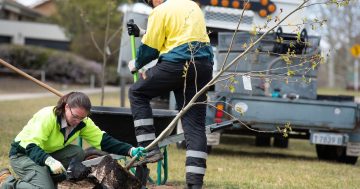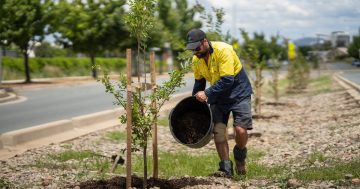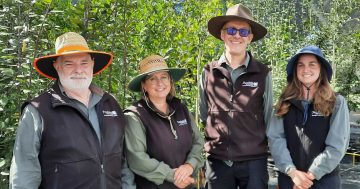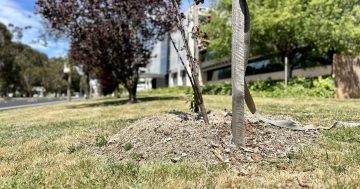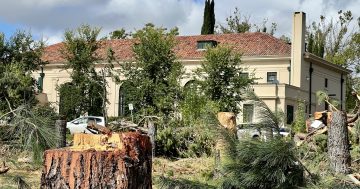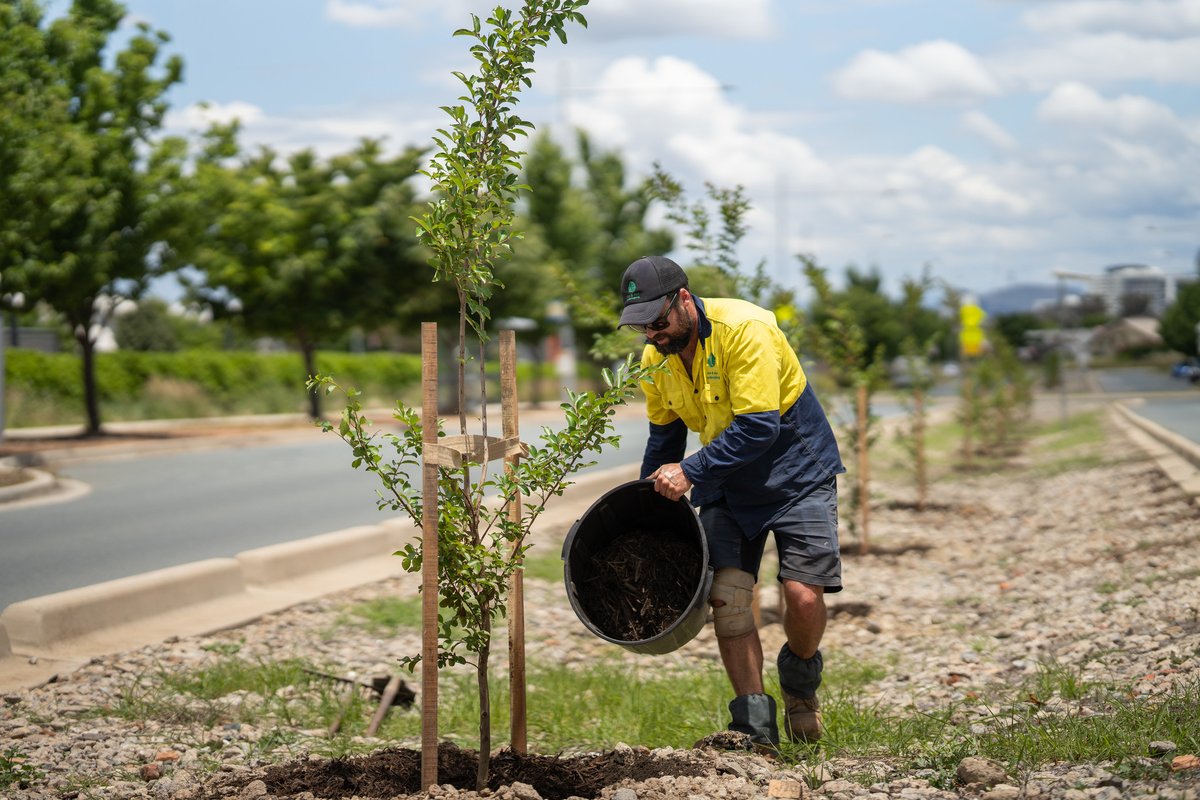
The tree planting program is facing logistical challenges and resistance from some residents. Photo: ACT Government.
The ACT Government has had to trim its ambitious tree planting program in the face of supply and contracting issues and opposition from residents, putting at risk its ability to achieve its goal of 30 per cent tree canopy cover across Canberra by 2045, an audit has found.
ACT Auditor-General Michael Harris has tabled the first report of the year, Urban Tree Management, which assessed the effectiveness of Transport and City Services’ management of urban trees to support the canopy goal.
The report says that to achieve it, the government sought to plant 450,000 trees by 2045, or 20,000 trees a year, but it has been forced to lower its expectations.
TCCS now proposes planting 5000 trees in 2024-25, 5000 trees in 2025-26 (half of the previous target), and 10,000 trees in 2026-27.
TCCS did manage to significantly increase its planting program from 2021 and still hopes to plant 54,000 trees through to 2023-24.
However, the report says the 2045 goal will be out of reach “without appropriate planning, or other mitigation strategies, to make up this shortfall in future years and address the ongoing risks and challenges to the planting program”.
These challenges include securing in-house and contractor resources, an appropriate supply of tree stock, and resistance from residents.
The audit also says a lack of policy and strategy within TCCS and collaboration with other directorates are hindering the tree-planting program.
TCCS says many residents want to keep their verge space for illegal car parking and are also worried about the safety of large species, their root systems, and the care they need.
The audit says finding other locations for trees when residents oppose plantings is a time-consuming and costly process.
Staff also face abuse and the trees may be vandalised or removed, although TCCS says it endeavours to talk to residents about the benefits of trees and the type of species planted.
Yarralumla Nursery supplies tree stock, but there is not any documented arrangement with TCCS, something the audit says poses a risk to the program “with the potential for each party to not clearly understand their roles, responsibilities and what they need to deliver to support a successful partnership”.
The nursery also lacks enough space to store trees and has been unable to maintain tree stock’s health when planting programs were delayed.
TCCS says it is seeking additional holding areas for trees and investigating using other nurseries.
The audit says TCCS expects future tree planting activities to focus on removing and replacing mature trees and working with other directorates to identify opportunities to increase canopy cover on other land.
It also says there are tensions between the government’s biodiversity and canopy coverage goals, with planting locations limited by efforts to maintain and promote biodiversity in urban areas.
The audit urges cross-directorate collaboration and discussion to balance these competing priorities and work towards increasing planting opportunities and, ultimately, canopy cover in urban areas.
It also says TCCS has not developed policy guidance about how urban tree management and planting are expected to contribute to achieving the canopy cover goal.
What is explicitly missing is how the planting of trees on unleased land is managed and coordinated to achieve the canopy cover goal, including tree plantings by other directorates.
The audit says TCCS has also not yet developed a ‘strategic tree replacement program’ or a strategic approach to replacing ageing trees.
However, it intends to engage environmental consultants to undertake a condition report of the ACT’s urban forest, progressively map suburbs at risk of losing canopy due to ageing trees, and employ a senior arborist to inspect mature trees and develop a timeline for renewal.
“These activities should be undertaken as a matter of priority,” the audit says.
It also says TCCS needs to improve its public reporting and data gathering.
The audit makes 11 recommendations.












